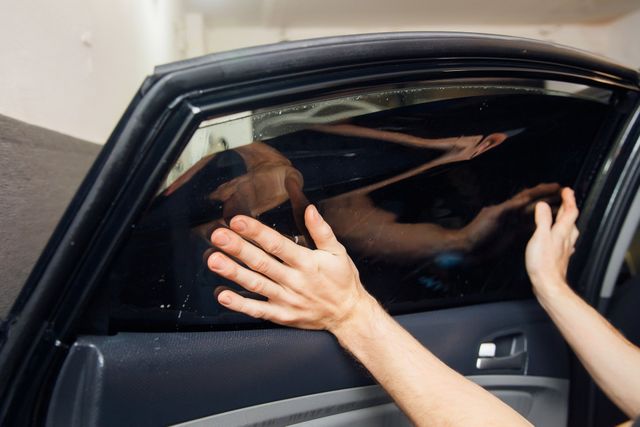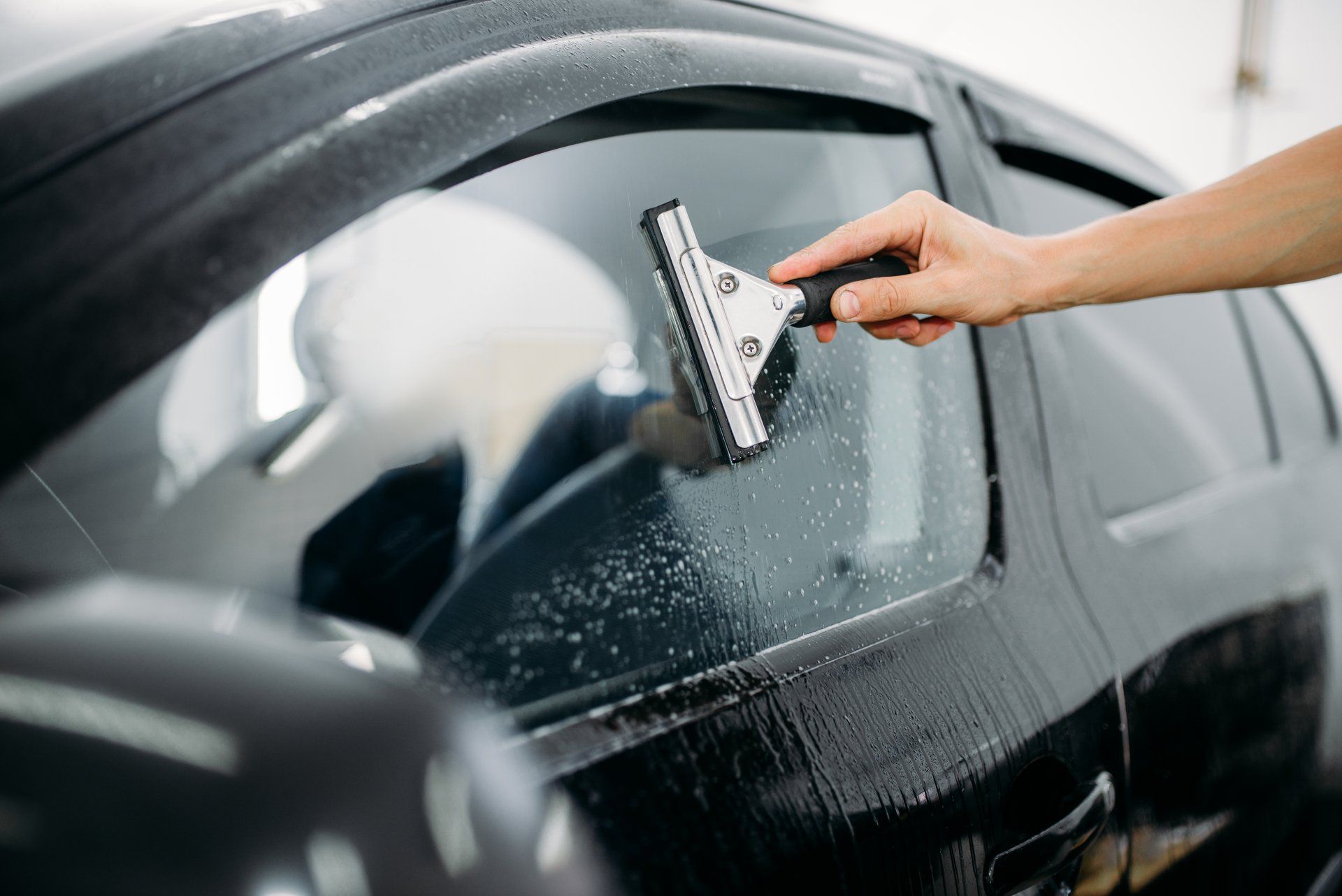How to Select the Right Window Tinting for Your Environment and Requirements
How to Select the Right Window Tinting for Your Environment and Requirements
Blog Article
Window Tinting Options: Locate the Right Shade for Your Design and Demands
Picking the ideal window tint for your lorry entails a cautious consideration of numerous elements, including individual looks, practical needs, and lawful restrictions. With alternatives ranging from light tintss that use minimal personal privacy to darker shades that boost seclusion, the choices can be frustrating.
Understanding Window Tinting Degrees
When thinking about window tinting, it is important to comprehend the various degrees of tint offered, as they significantly impact both visual appeals and capability. Window tinting is classified based upon Noticeable Light Transmission (VLT) percents, which show the amount of light allowed to pass via the glass. The VLT percent can range from extremely light (over 70%) to really dark (listed below 5%)
The key levels of tint consist of clear, which provides UV defense without altering exposure; light tint (over 50% VLT), which slightly minimizes glow while preserving presence; tool tint (around 35% VLT), striking a balance in between personal privacy and light transmission; and dark tint (listed below 20% VLT), giving significant privacy and warmth reduction however restricting exterior presence.
Understanding these levels is important as they can affect driving safety and security, lawful compliance, and personal convenience. Additionally, local guidelines often dictate acceptable tint degrees, differing by state or district. Therefore, before selecting a tint, it is a good idea to research study and guarantee adherence to these guidelines while taking into consideration individual choices for design and useful advantages.
Popular Tint Shades Explained

Among the most prominent choices is the classic dark tint, typically ranging from 20% to 5% VLT (Noticeable Light Transmission) This shade provides optimum privacy and a smooth, innovative appearance. It efficiently obstructs UV rays and warm, making it excellent for warm environments, though it may limit presence in the evening.
Alternatively, lighter shades such as 35% or 50% VLT offer an extra subtle appearance while still using some level of personal privacy. These shades are ideal for those looking for an equilibrium between appearances and performance, as they permit far better visibility and comply with different lawful criteria.
Another emerging preference is the ceramic tint, which can be available in a selection of tones - window tinting. It provides remarkable warm denial and UV defense without significantly altering the car's appearance

Lawful Laws for Window Tinting
Comprehending the lawful policies bordering window tinting is crucial for vehicle proprietors aiming to personalize their cars. Each state in the united state has specific legislations controling the darkness or lightness of window tintss, frequently gauged by Visible Light Transmission (VLT) percentage. VLT describes the quantity of light that can go through the glass and the film incorporated.
In numerous states, guidelines determine different VLT portions for numerous windowss, including front windshields, side windowss, and back windowss. Some states might permit a tint of 70% VLT for windshields while permitting darker tintss for rear windowss. In addition, certain states have restrictions on reflective tintss, which can produce glow for various other vehicle drivers.
Failure to adhere to these policies can cause penalties, mandated elimination of the tint, and raised insurance policy costs. Lorry proprietors should speak with regional legislations or state DMV web sites to guarantee they are within lawful limitations prior to continuing with setup. Comprehending these policies not just aids avoid legal repercussions but also guarantees a safe driving experience.
Benefits of Different Tint Materials
Exploring the advantages of various tint products discloses substantial benefits that can improve both the performance and aesthetic appeal of a vehicle. Each product supplies distinctive attributes fit to details demands and choices.
Dyeded window films are prominent for their affordability and capacity to decrease glare. Metalized films, on the various other hand, offer superior warmth reduction and UV defense due to their reflective buildings.
Ceramic window films represent a costs choice, giving exceptional warmth denial while keeping visibility. They are non-metallic, thus avoiding any kind of signal disruption, and are very durable, withstanding scratches and fading gradually. In addition, ceramic films do helpful resources not consist of dyes, guaranteeing a longer-lasting appearance.
Lastly, crossbreed films integrate components from dyeded and metalized choices, supplying a balanced performance in regards to warmth rejection, glow reduction, and expense. Each tint material serves special objectives, allowing automobile proprietors to pick the very best fit for their way of living and visual preferences, ultimately enhancing their driving experience.
Selecting the Right Tint for You
Discovering the right window tint entails considering different aspects, consisting of individual choices, vehicle type, and regional guidelines. Initially, evaluate your personal design and preferred degree of personal privacy, discover this info here as these will certainly guide your choice of tint shade. Darker tintss give boosted privacy but may not be appropriate for all chauffeurs, especially those who favor an even more open feeling inside their vehicle.
Next, consider your vehicle kind, as the shapes and size of windowss can affect the efficiency of specific tintss. As an example, larger windowss might gain from reflective tintss that decrease glare while smaller windowss could be a lot more fit to dyeded films that offer refined looks.
Additionally, it's crucial to examine regional regulations relating to window tinting. Several states impose restrictions on the permitted darkness and reflectivity, specifically for front windowss. Compliance with these legislations is vital to make certain and prevent penalties security.
Last but not least, assess the tint material that ideal fits your demands. Choices consist of dyeded, metalized, ceramic, and crossbreed films, each offering distinct advantages associating with warmth rejection, UV defense, and sturdiness. By considering these elements, you can with confidence choose a home window tint that aligns with your style and practical requirements.
Final Thought
Finally, selecting the suitable window tint requires cautious factor to consider of numerous elements, consisting of VLT percents, local guidelines, and the wanted visual. Different tint materials use unique benefits that can improve automobile convenience and defense. By thoroughly comprehending the offered alternatives and straightening them with useful demands and specific choices, one can achieve an optimal balance between style and functionality in window tinting choices.
Choosing the proper window tint for your automobile entails a careful consideration of various factors, including personal looks, useful demands, and lawful limitations. Each state in the U.S. has particular legislations regulating the darkness or lightness of window tintss, often measured by Visible Light Transmission (VLT) percent. Some states may permit a color of 70% VLT for windscreens while permitting darker tintss for back windowss.Discovering the right window tint includes considering various factors, consisting of individual Get the facts choices, automobile type, and local regulations.In verdict, choosing the suitable window tint needs careful consideration of numerous aspects, including VLT percentages, neighborhood policies, and the desired aesthetic.
Report this page